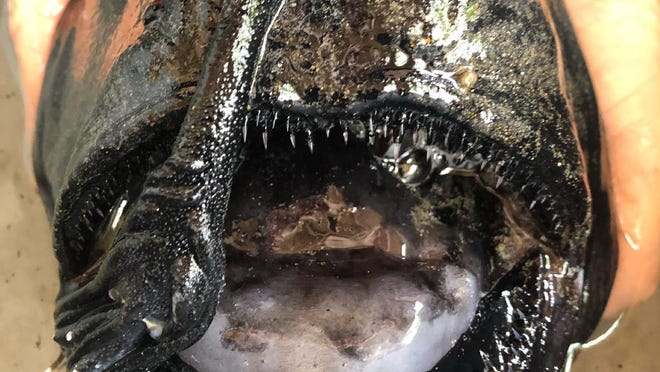- On rare occasions, a rabbit with what looks like horns is spotted in the Midwest.
- The horns are actually growths, and they don’t have any immediate effect on rabbits.
- Some people believe these growths inspired the creation of the mythical “jackalope.”
It’s not the Upside Down – it’s just South Dakota.
About once a year, Sioux Falls Animal Control and the South Dakota Department of Game, Fish and Parks get reports about a rabbit with growths that look like horns or tentacles. It’s not the only place it happens either: The Colorado Parks and Wildlife Department says cases are reported every year. They can be found throughout Midwest states.
The rabbit is a strange sight, and gazing upon it, you might think you’ve encountered something out of American folklore.
Sioux Falls resident Dennis Schorr told KELO he saw an unusual rabbit July 7 while walking his dog.
“I’ve never seen nothing like that before. I walk my dogs every day, and I see lots of rabbits – but today was very unusual,” Schorr said.
But officials say there’s a logical explanation. Here’s what’s going on.
Shark attack: Long Island suffers a fifth shark attack in the last 2 weeks, including two in one day
What’s everyone talking about? Sign up for our trending newsletter to get the latest news of the day
What is causing the horned growths on rabbits?
It’s not a mythical animal, but rather an effect of a virus.
Cottontail rabbits with the unusual appearance are infected with Shope papilloma virus (SPV), also known as the cottontail rabbit papillomavirus (CRPV), a wart-like condition that affects the species. The growths appear only on a rabbit’s head.
“It’s a virus that pops up from time to time,” Beth Thompson, South Dakota’s state veterinarian, told USA TODAY. “It’s not commonplace.”
Wildlife officials say people believe the growths could be behind the origin of the mythical “jackalope,” a rabbit creature of American folklore with antlers.
‘Let’s get down alive’:Video shows pilot landing plane on highway after engine emergency
Do the growths have any effect on rabbits?
The growths on the rabbits’ heads and faces can get large, but they don’t cause any immediate effects, according to Colorado Parks and Wildlife.
Dr. Michael Oglesbee, director of the Infectious Diseases Institute and The Ohio State University, said rabbits typically have a immune response that will get rid of the virus and growths.
But the growths eventually could become cancerous and deadly – not to mention, painful. So veterinarians will surgically remove the growths “whenever possible,” said Dr. Barbara Oglesbee, a veterinary practitioner in Ohio and wife of Michael Oglesbee.
The growths also could get in the way of their ability to see, eat or drink, which could lead to starvation.
How do rabbits get the virus?
Because SPV and CRPV are viruses, they are most likely spread by contact among infected rabbits, as well as from ticks and mosquitoes, said Milo Hartson, lead animal control officer in Sioux Falls.
Thompson said his educated guess is that insects with the virus will bite the rabbits on the head, which could explain why the growths appear there.
“The insects will target a rabbit on the ears, the eyelids, some of those areas that aren’t as covered with the fur. That’s where you’ll see the growths, from the insect bite and then the virus itself,” Thompson said.
Travis Duncan, public information officer for Colorado Parks and Wildlife, said cases are usually seen in the spring and summer, “which is probably associated with high rabbit densities and possibly increased insect vectors.”
Rowdy the cat:A pet cat that went AWOL after chasing birds in Boston airport weeks ago is finally caught
Can humans get the rabbit papilloma virus?
Humans and pets such as dogs and cats can’t contract the virus from rabbits, but the virus could spread from wild rabbits to domestic rabbits, according to Colorado Parks and Wildlife.
“In domestic rabbits, the disease is more severe than in wild rabbits and should be treated by a veterinarian,” the department says. That is why owners of pet rabbits need to ensure their pets have no direct contact with wild rabbits, Dr. Michael Oglesbee said.


